Travels in North America
Bermuda. IC 5070
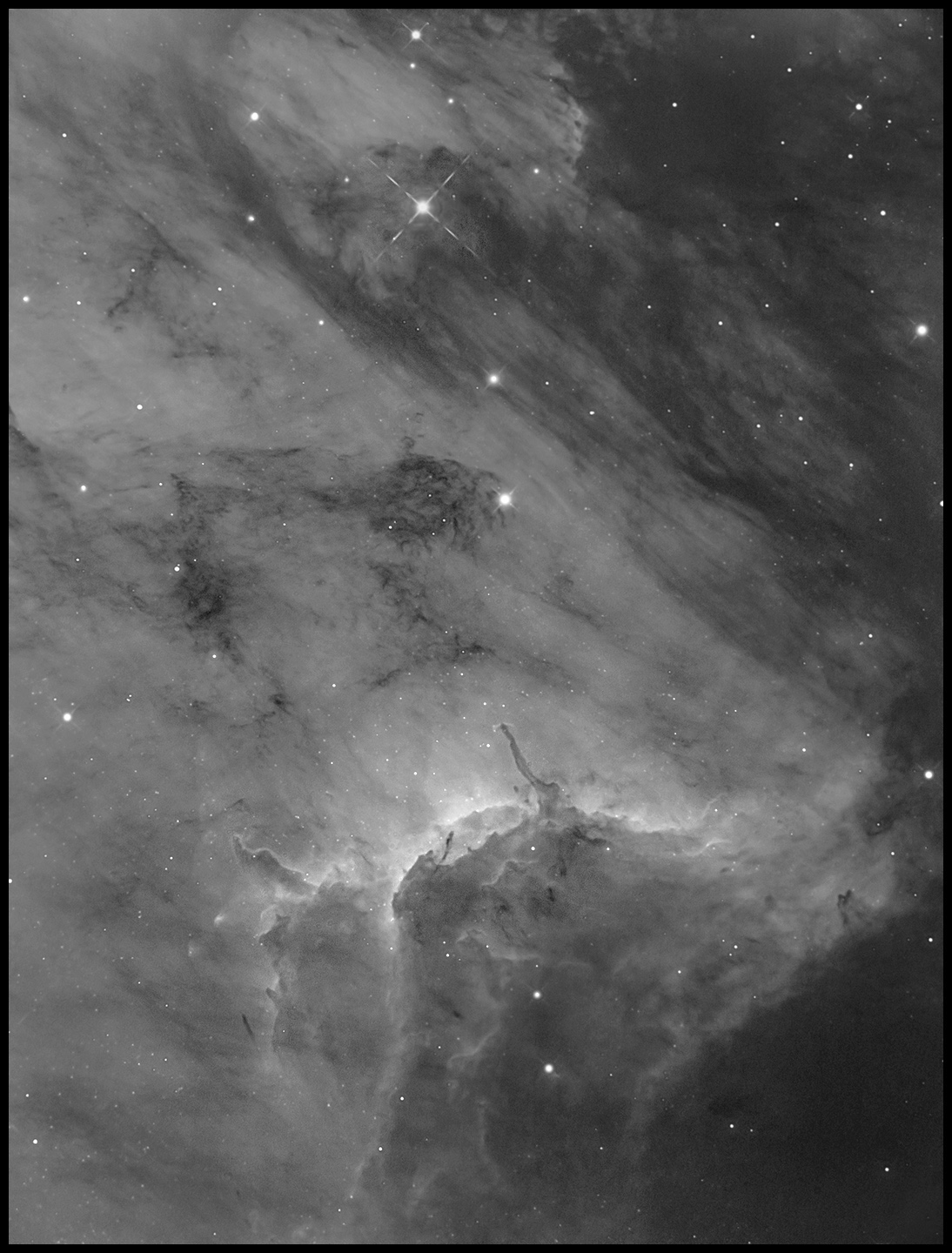
23 x 600s
The northern gulf coast.
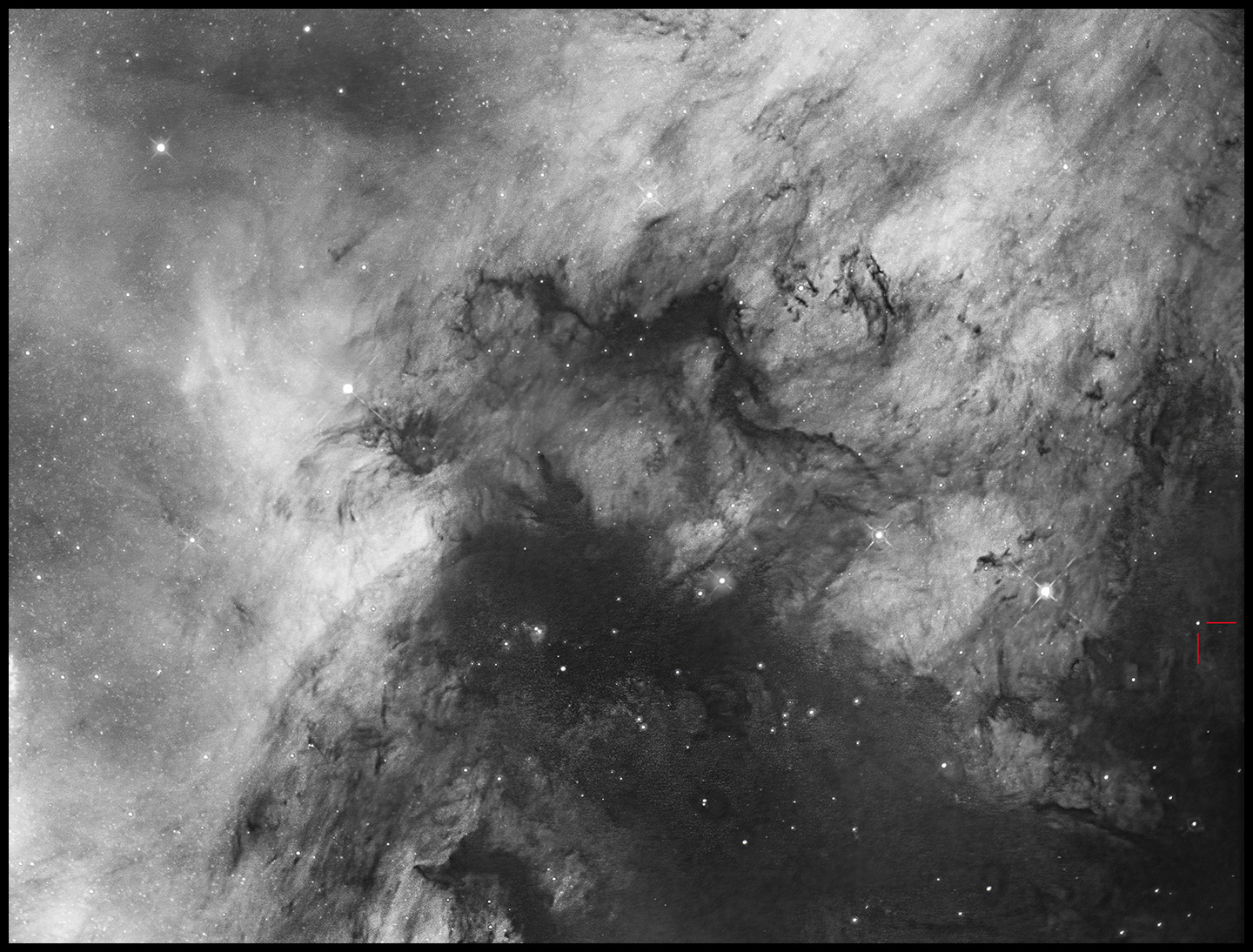
20 x 600s
Crosshairs indicate "the Bajamar Star"
which illuminates this entire H-II region.
The windward Isles. LBN 332.
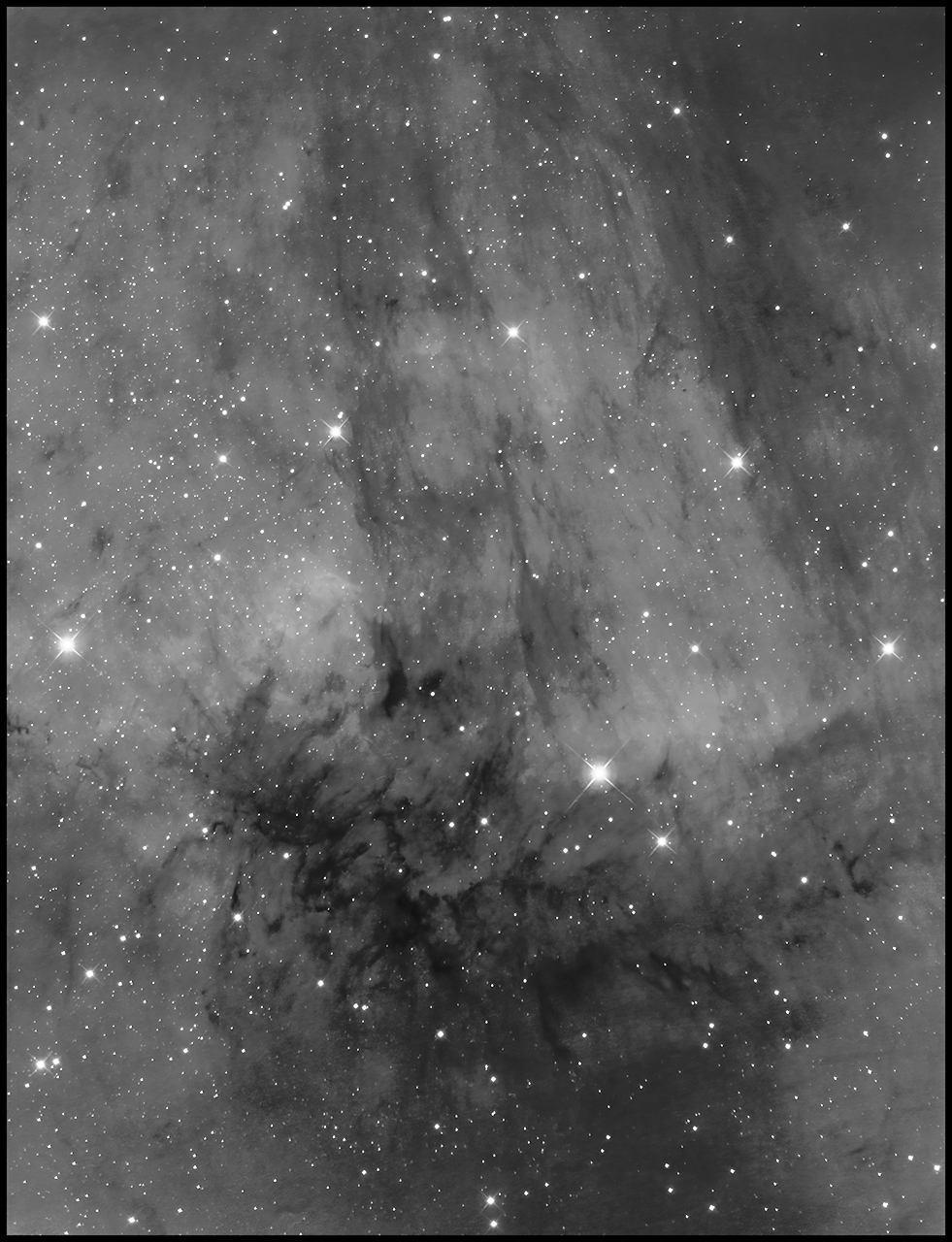
47 x 180s + 157 x 300s (15h 26m)
The Bay of Campeche.
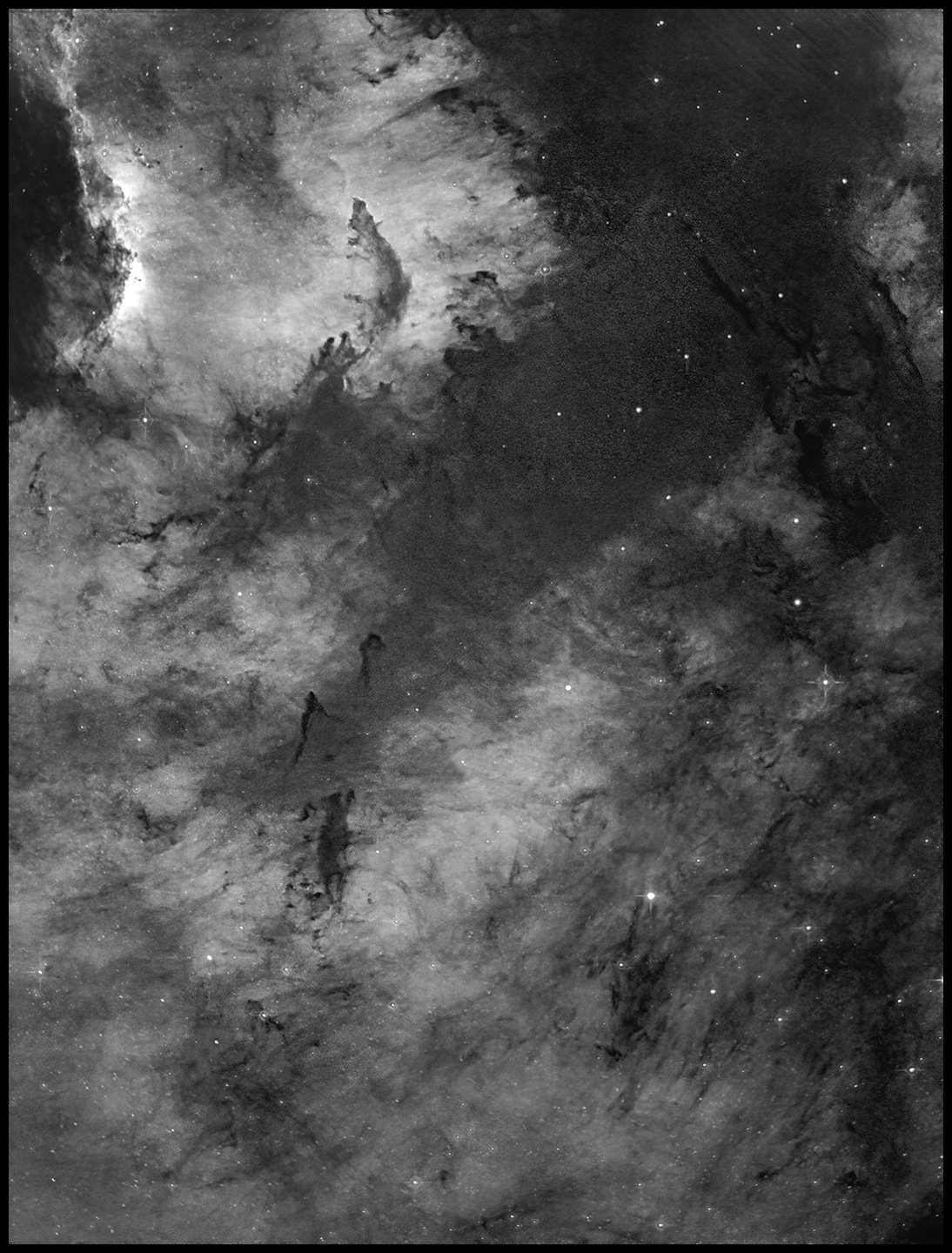
22 x 600s
Alberta. You've seen this little crescent-shaped red doodad high in the northern part of the "continent" in a thousand widefield photos of NGC 7000. Here it is up close:
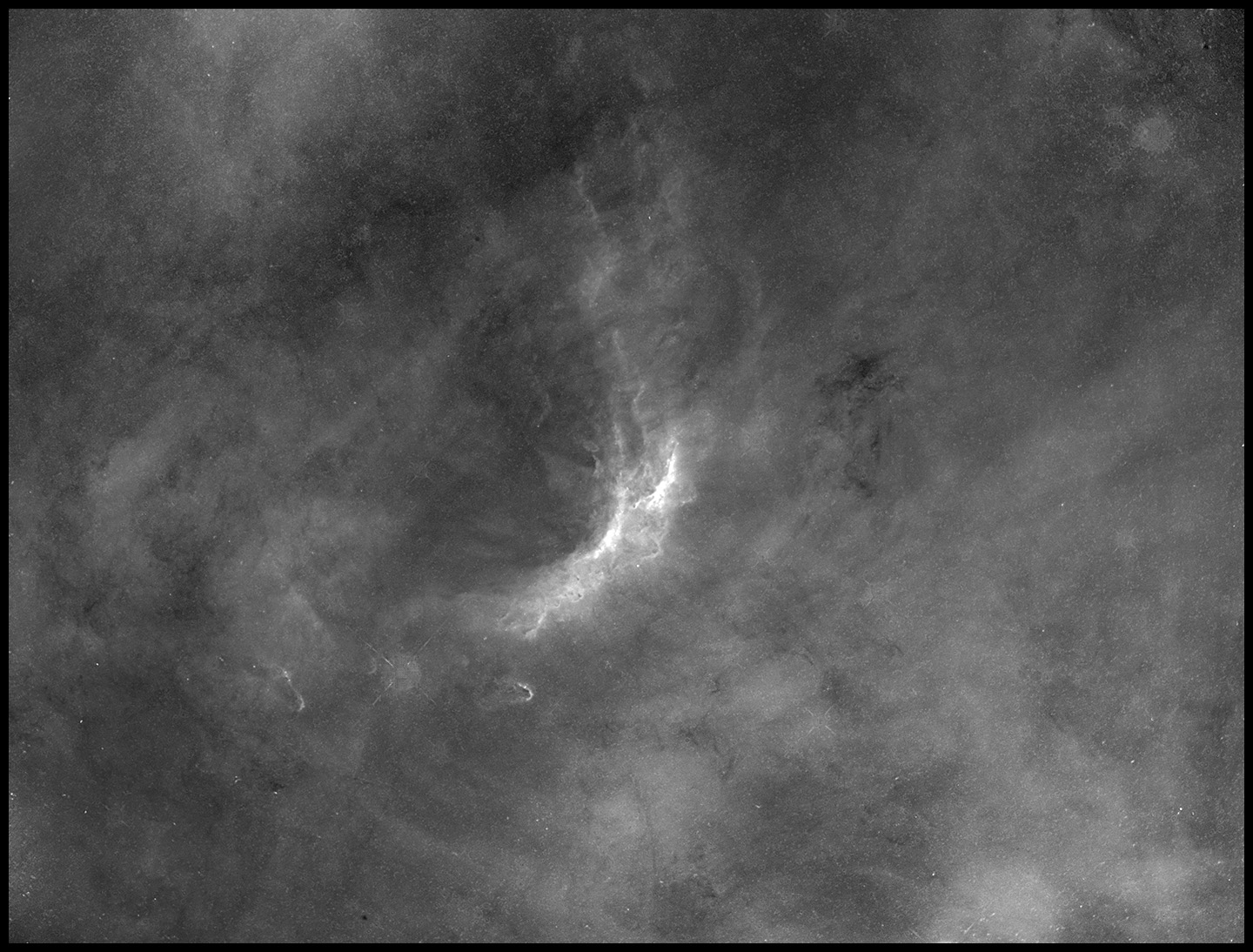
20 x 600s
That last one offers a particularly impressive demonstration of how nebulosity is obscured by a crowded starfield. Compare the star-free version above with this image using the very same data in which the stars have been left in place. This should look a good bit more familiar:
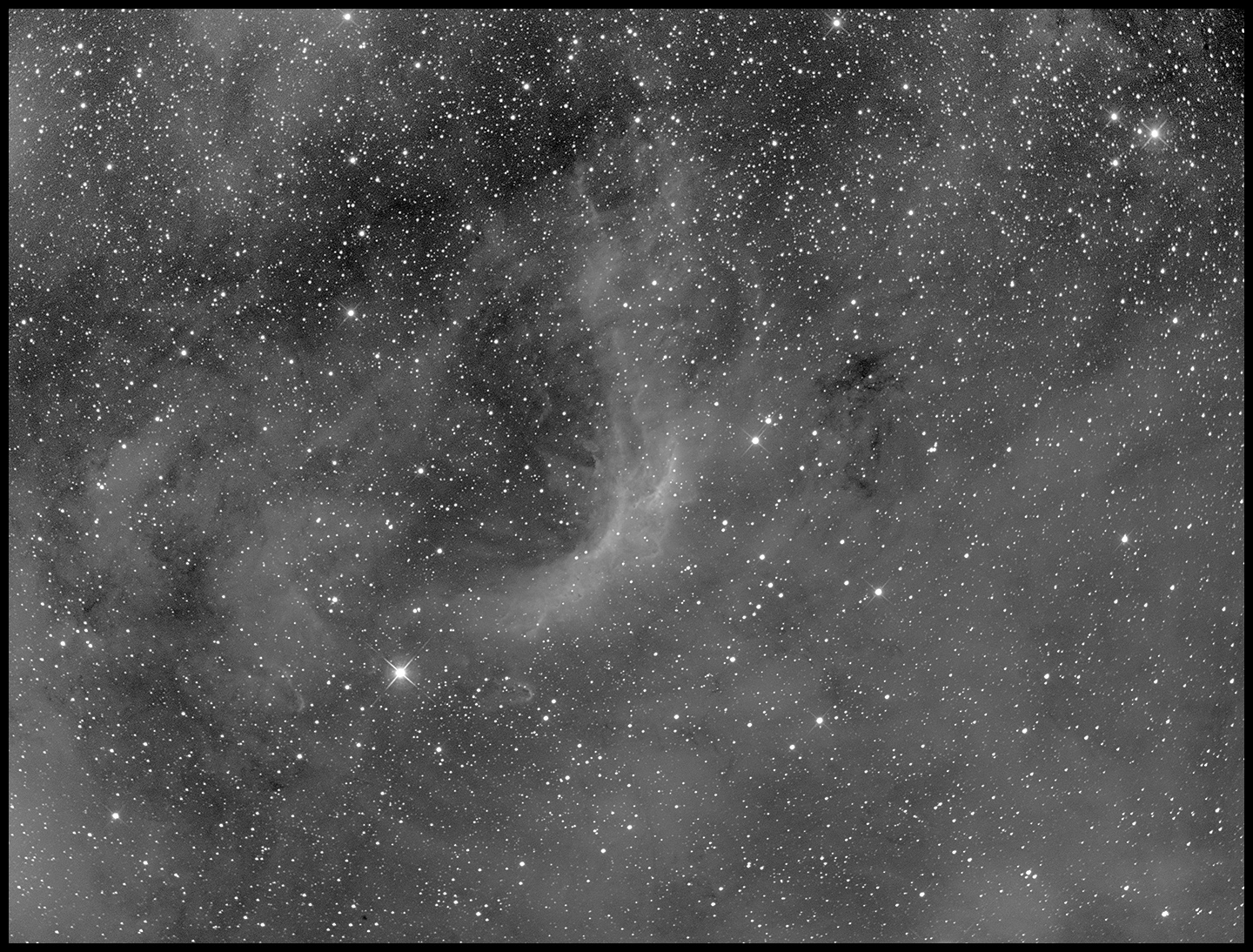
20 x 600s
I made all the monochrome images with an AstroTech 10-inch R-C telescope using a TeleVue field flattener / compressor to produce a 1200mm focal length. The camera was a ZWO ASI1600MM working at -15C through a 7nm Baader hydrogen-alpha filter. Guiding for my Astro-Physics Mach1 mount was by PHD2 and an 80mm F5 guidescope in fixed rings feeding a ZWO ASI120MM Mini in an X-Y stage. I used PixInsight for stacking and most processing -- the star removal module Starnet+ got a workout on several images.
:: top ::
|